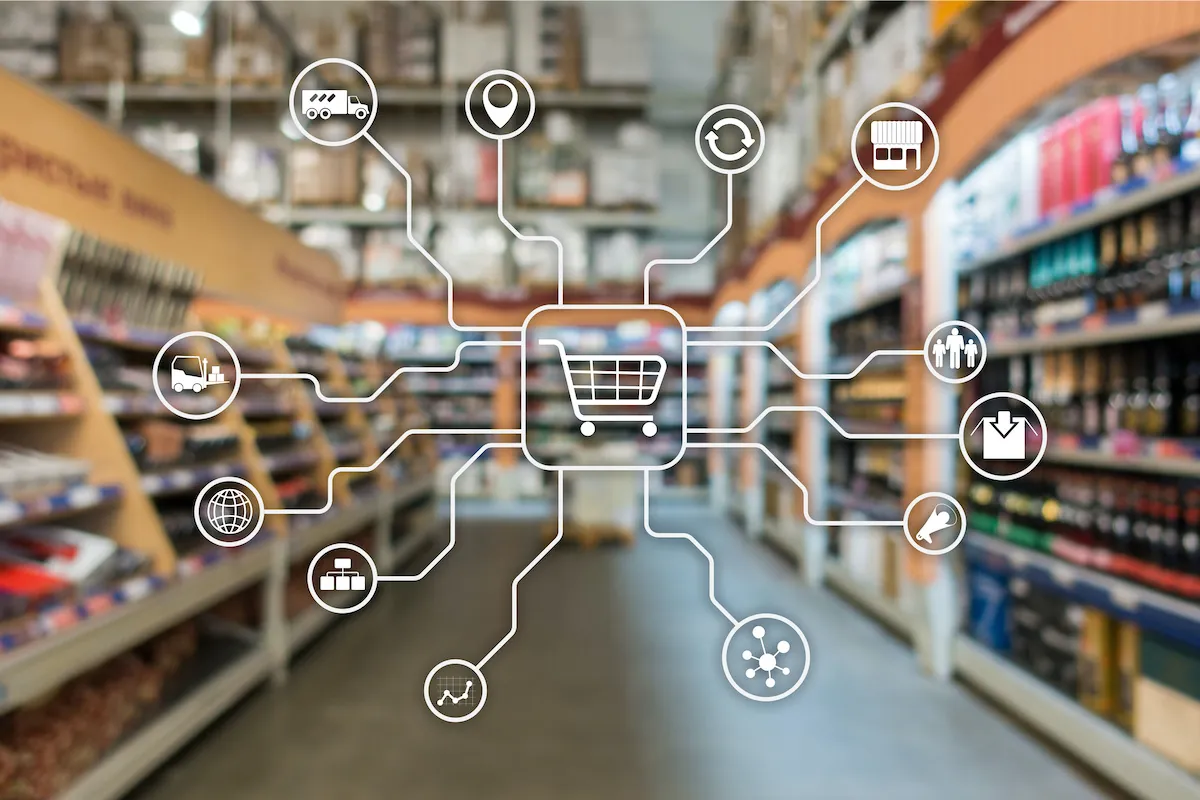How Data Centers and the Retail Industry Affect Each Other16 min read

In almost every industry, the ability to collect, store and process data is becoming central to business success. Retail is no exception.
Big shifts in consumer habits and new technology — online shopping platforms, big data analytics and even IoT-powered cashierless stores — are making the retail industry more reliant on data centers. As a result, data centers are experiencing a large amount of growth — but in some cases, are struggling to keep up with the new demands posed by their clients in retail.
Here is how the retail industry is being changed by technology — and how those changes are affecting data centers.
Technological Shifts in the Retail Industry
A few big shifts are happening in retail right now that are driving the push toward the use of data centers — on-site or colocated facilities that centralize a company’s IT processes. These centers provide the computer infrastructure needed for the storage and processing of huge amounts of information.
At the foundation of many of these shifts is the pivot to online shopping. Many platforms implement technology and tracking tools that allow companies to record vast amounts of data about each customer, including their preferences, shopping habits and history, and the products they’re most likely to buy. Those companies can then use that information to personalize their shopping experience — delivering targeted ads for products a specific customer is expected to buy, curating individualized catalogs, and more.
Customers have even come to expect brands to personalize their shopping experience. Implementing this type of cutting-edge retail personalization, however, is a huge challenge for retailers. Recording, storing and processing customer data demands significant storage space and processing power.
These companies are also beginning to implement advanced analytics techniques to predict sales numbers, manage inventory levels and decide what products to develop, stock and sell.
At the same time, brick-and-mortar retailers are also implementing several innovations that rely on cutting-edge data-collection technology. These include cashierless stores, smart shelves, advanced integrated POS systems, and AI-powered predictive analytics that use a combination of current and historical sales data to adjust inventory levels.
All these new technologies and techniques demand the same thing — more storage space and computer processing power.
Because few retailers needed these levels of computing resources in the past, almost none were equipped with the right hardware to collect, store and process this data at a large scale until recently. Instead, the pivot to new technologies resulted in a spike in data center investment that has allowed stores to use these new technologies.
Data Centers Prepare for Growing Demand
The high levels of demand generated by the retail industry have spurred immense growth, leading to some of the best years on record for the sector.
In fact, the rise in demand has been so sudden and so significant that data centers are rapidly building up their infrastructure and turning to new innovations — like advanced cooling methods for increasingly powerful hardware setups — in anticipation of an explosion in demand.
The challenges faced by data centers are made even steeper by computing resource demand coming from industries across the economy. Companies in sectors ranging from logistics to manufacturing are buying fleets of internet of things (IoT) sensors and implementing big data analysis platforms that put massive strain on their existing hardware.
As a result, the increase in demand for data centers has been massive. Most industry predictions forecast that data center demand will double by 2021 — if not sooner.
At the same time, the kind of computing resources data centers need is also changing rapidly.
For a moment, demand for bandwidth seemed like it was leveling out, and there were hopes that new technology could significantly reduce congestion. Now, however, modern technology is built to constantly collect large amounts of information — taking instant stock of shelves, monitoring clicks and purchases, and even tracking a customer’s sentiment as they examine a product.
Soon, data centers are expected to need more bandwidth than ever. Right now, data center administrators are moving quickly to prepare networks for the continually growing demand, which may require a total revamp of network infrastructure in many centers over the next few years.
Future Challenges for Retail and Data Centers
Data centers also face the challenge of securing these huge sets of customer info from retailers. Personal and financial information is more valuable than ever, making data centers that hold it for retailers prime targets for hackers and cybercriminals.
Between January 2018 and November 2019, nearly 20 consumer companies — including Macy’s, Poshmark and Kay Jewelers — reported data breaches. In the case of the Macy’s attack, credit card numbers and personally identifying data may have been exposed.
As the rate of cybercrime grows, these breaches may become both more common and more severe.
Last year, a hacker was able to breach Capital One’s cloud-based network by exploiting a misconfiguration in Amazon’s firewall. Analysis after the fact found that a significant portion of the blame laid with Amazon, whose security measures left much of its data vulnerable to similar cyberattacks.
The vulnerability was patched up quickly. By November, Amazon had publicly announced that it had already taken steps to make its servers more secure.
However, when much of the retail industry’s data — which can include names, addresses and credit card numbers — is stored with just a handful of companies, security vulnerabilities can become a significant issue.
In the future, as retailers continue to collect and store larger amounts of customer information, data center administrators will need to remain especially vigilant, taking all necessary steps to defend sensitive data.
Retail Innovation Puts New Pressure on Data Centers
The world of retail is changing quickly. Today, there are more ways than ever to collect and analyze huge sets of information on everything from sales to customer preference to advertising effectiveness.
These solutions have proven both effective and popular, leading retailers to turn to data centers, which can provide them with the computing power they need to implement these tools.
The growth in investments has been good news for the industry and has also inspired innovations at data centers that want to be prepared for further growth. It isn’t easy to source and maintain computer equipment at the levels demanded by these new technologies. As a result, many centers are establishing new and innovative infrastructure in preparation for future demand and the changing needs of retailers.
In the future, data centers may also need to be more prepared to defend customer data against cyberattacks and unauthorized access. It’s a changing landscape that will require near-constant vigilance to keep on top of.
Airflow Management Awareness Month 2019
Did you miss this year’s live webinars? Watch them on-demand now!

Kayla Matthews
Freelance Writer
Kayla Matthews is a technology journalist and data center writer whose work has been featured on Data Center Journal, Data Center Frontier, Data Center Dynamics and the vXchnge blog. To read more from Kayla, please visit her blog, Productivity Bytes.
Airflow Management Awareness Month 2019
Did you miss this year’s live webinars? Watch them on-demand now!
0 Comments